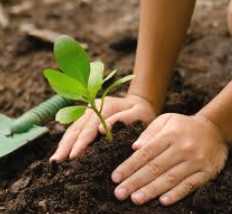Trees and plants are vital to the health and balance of our planet. They provide numerous ecological, economic, and social benefits that support life on Earth. From purifying the air we breathe to regulating the climate and maintaining biodiversity, trees and plants are essential for human survival and the well-being of ecosystems. In this essay, we will explore the importance of trees and plants and why it is crucial to protect and nurture them.
1. Air Purification and Oxygen Production
Trees and plants play a critical role in purifying the air by absorbing carbon dioxide and releasing oxygen during the process of photosynthesis. One mature tree can produce enough oxygen for several people to breathe each day. In urban areas, where air pollution levels are higher due to vehicle emissions and industrial activities, trees act as natural air filters. They absorb harmful gases such as carbon monoxide, sulfur dioxide, and nitrogen dioxide, improving the quality of the air we breathe.
2. Climate Regulation
Trees and plants are essential for regulating the Earth’s climate. Through the process of photosynthesis, they absorb carbon dioxide, a major greenhouse gas responsible for global warming. Forests act as carbon sinks, storing vast amounts of carbon and mitigating the effects of climate change. Additionally, trees provide shade and reduce the urban heat island effect, where cities experience higher temperatures than surrounding rural areas due to concrete and asphalt surfaces. By planting more trees, we can cool down cities and reduce energy consumption for air conditioning.
3. Prevention of Soil Erosion and Water Conservation
The roots of trees and plants help prevent soil erosion by binding the soil together. In areas with little vegetation, heavy rainfall can wash away the top layer of soil, leading to land degradation and loss of agricultural productivity. Trees and plants also help retain moisture in the soil, reducing the risk of drought. Forests and wetlands, in particular, play a vital role in regulating the water cycle by absorbing rainfall, replenishing groundwater, and preventing floods.
4. Biodiversity and Habitat
Trees and plants are home to a diverse array of wildlife. Forests, jungles, and grasslands provide habitats for countless species of animals, birds, insects, and microorganisms. They offer food, shelter, and protection for these species, maintaining the balance of ecosystems. The loss of trees due to deforestation leads to habitat destruction, endangering many species and contributing to biodiversity loss. Protecting forests and other natural habitats is essential for preserving the delicate balance of life on Earth.
5. Economic and Medicinal Value
Trees and plants are a valuable source of raw materials for various industries. Timber, fruits, vegetables, rubber, and paper are all products that come from trees and plants, contributing significantly to the global economy. In addition to their economic value, many plants have medicinal properties. Over 25% of modern medicines are derived from plants, and many traditional healing practices rely on the use of herbs and other plant-based remedies. Preserving plant species is crucial for future medical discoveries and advancements.
6. Aesthetic and Psychological Benefits
The presence of trees and plants enhances the beauty of our surroundings. They create green spaces that provide a sense of tranquility and relaxation. Studies have shown that spending time in nature, surrounded by trees and plants, can reduce stress, improve mental health, and enhance overall well-being. Parks, gardens, and forests are important recreational spaces where people can connect with nature and experience its calming effects.
7. Contribution to Agriculture and Food Security
Trees and plants are the foundation of agriculture, providing food for humans and animals. Crops such as wheat, rice, fruits, and vegetables are all plant-based, and their cultivation is essential for feeding the world’s population. In addition, trees provide shade and shelter for crops, protect them from wind, and contribute to maintaining soil fertility through nutrient cycling. Sustainable agricultural practices that incorporate tree planting and crop rotation can help ensure long-term food security.
Conclusion
Trees and plants are indispensable to life on Earth. They provide essential services such as air purification, climate regulation, and habitat for wildlife, while also offering economic, medicinal, and psychological benefits. In a world facing environmental challenges such as deforestation, climate change, and habitat loss, it is crucial that we prioritize the protection and restoration of trees and plants. By doing so, we ensure a healthier planet for future generations and maintain the balance of ecosystems that sustain all life forms.

